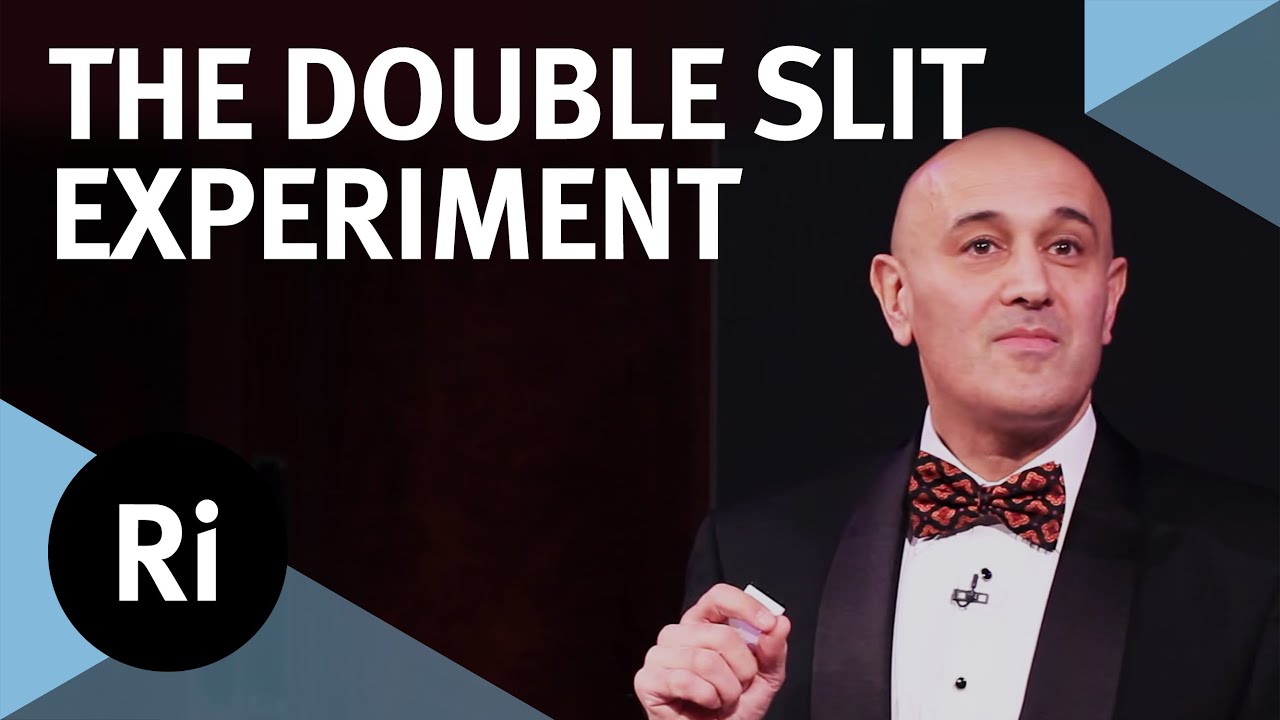Intriguing Scientific Experiments And Studies That Pushed The Limits Of Human Knowledge
Over the years, there have been numerous intriguing scientific experiments and studies that have expanded our understanding of the world around us. These experiments and studies have helped us to learn about everything from the smallest particles in the universe to the most complex systems in nature.
Author:Xander OddityReviewer:Dr. Felix ChaosphereMay 15, 202315.1K Shares270.2K Views

Over the years, there have been numerous intriguing scientific experiments and studiesthat have expanded our understanding of the world around us. These experiments and studies have helped us to learn about everything from the smallest particles in the universe to the most complex systems in nature.
Most Intriguing Scientific Experiments Of All Time
Here are just a few examples of some of the most intriguing scientific experiments and studies:
Double-Slit Experiment
The Double-Slit Experiment is one of the most intriguing scientific experiments of all time. It is a classic experiment in quantum mechanics that demonstrates the wave-particle duality of light. The experiment was first conducted by Thomas Young in 1801, but it wasn't until the early 20th century that the experiment gained significance in the field of physics.
The experiment involves shining a beam of light through two narrow slits, which creates a pattern of bright and dark lines on a screen behind the slits. This pattern is known as an interference pattern and it occurs because the light waves interfere with each other as they pass through the slits.
However, when the experiment is conducted with a detector placed behind one of the slits, the interference pattern disappears and is replaced by two separate bands of light on the screen. This indicates that the photons are behaving like particles instead of waves.
This phenomenon is known as the wave-particle duality of light, which suggests that light can behave as both a wave and a particle depending on the circumstances of the experiment. This duality is a fundamental concept in quantum mechanics and has led to many advances in modern technology.
The Double-Slit Experiment has been conducted with other particles as well, including electrons and even large molecules, with similar results. This has led to the development of the field of quantum mechanics, which explores the behavior of particles on a subatomic level.

Double Slit Experiment explained! by Jim Al-Khalili
Stanford Prison Experiment
The Stanford Prison Experiment is one of the most well-known and controversial psychological studies of all time. Conducted in 1971 by psychologist Philip Zimbardo, the experiment was designed to investigate the psychological effects of power and authority on both prisoners and guards in a simulated prison environment.
The experiment involved the random assignment of 24 male college students to the roles of either prisoners or guards. The simulated prison environment was set up in the basement of Stanford University's psychology department and was designed to look and feel like a real prison, complete with cells, uniformed guards, and a strict set of rules and regulations.
However, the experiment quickly spiraled out of control. The guards began to abuse their power and authority, subjecting the prisoners to verbal and physical abuse, depriving them of sleep and food, and forcing them to perform degrading tasks. The prisoners, in turn, became increasingly passive and compliant, adopting a submissive and helpless attitude.
The experiment was originally planned to last for two weeks but was terminated after only six days due to the extreme and disturbing behavior of the participants. Zimbardo himself became so immersed in the experiment that he failed to recognize the harm being done to the participants until it was too late.
The Stanford Prison Experiment has been widely criticized for its ethical implications, with many questioning the validity of the results and the methods used in the study.
Some argue that the experiment was too extreme and that the results cannot be generalized to real-life situations. Others have pointed out that the experiment was unethical, with participants being subjected to psychological harm and abuse.
Despite the controversy surrounding the Stanford Prison Experiment, it has had a profound impact on the field of psychology and has influenced our understanding of the psychology of power and authority, group dynamics, and the role of situational factors in behavior.
It has also sparked important debates about the ethics of psychological research and the responsibility of researchers to protect their participants from harm.
Milgram Obedience Study
The Milgram Obedience Study is one of the most intriguing scientific experiments of all time. Conducted in the early 1960s by psychologist Stanley Milgram, the study explored the willingness of people to obey an authority figure even when that authority figure is asking them to do something that goes against their own moral code.
The experiment involved a participant, known as the "teacher," who was asked to administer electric shocks to another participant, known as the "learner," who was actually a confederate in the experiment. The teacher was told that the shocks were increasing in intensity, and that they could cause harm or even death to the learner.
The experiment was designed to test how far the teacher would go in administering the shocks when instructed to do so by an authority figure. In this case, the authority figure was the experimenter, who encouraged the teacher to continue administering the shocks even when the learner was screaming in pain and begging for the experiment to stop.
Despite the obvious distress of the learner, over 60% of the participants in the Milgram Obedience Study continued to administer the shocks up to the highest level, even when the learner appeared to be unconscious or unresponsive. This result shocked the scientific community and raised questions about the limits of human obedience to authority.
The Milgram Obedience Study has had a profound impact on the field of psychology and has influenced our understanding of the psychology of obedience, conformity, and social influence. It has been replicated and studied in various forms over the years, and its implications continue to be debated among psychologists and ethicists.

Milgram Obedience Study
Schrödinger's Cat
Schrödinger's cat is a thought experiment devised by the Austrian physicist Erwin Schrödinger in 1935 to explain the paradoxical nature of quantum mechanics. The experiment is designed to illustrate the idea of superposition and the concept of wave-particle duality.
In the thought experiment, a cat is placed in a sealed box along with a radioactive source and a detector. The source has a 50-50 chance of emitting a particle that will trigger the detector and release a lethal poison, killing the cat. The decay of the radioactive source is a purely random event that is not predictable, so at any given moment, the cat's fate is unknown.
According to the principles of quantum mechanics, the radioactive source exists in a state of superposition, meaning that it is both decayed and not decayed until it is observed. In other words, until the box is opened and the detector is observed, the cat is both alive and dead at the same time.
The experiment is designed to highlight the strange and paradoxical nature of quantum mechanics, where particles exist in a state of superposition until they are observed or measured.
This concept has been the subject of much debate and speculation, with some physicists suggesting that it may be possible to exploit quantum effects to build powerful computers or even travel through time.
While Schrödinger's cat is a thought experiment and has never been performed in reality, it remains one of the most intriguing scientific experiments and has sparked many important discussions about the nature of reality and the limits of our understanding of the universe.
The experiment highlights the fact that our understanding of the universe is limited by our ability to observe and measure it, and that there may be many aspects of reality that we are yet to discover.
People Also Ask
What Are Some Intriguing Scientific Experiments And Studies?
There are many intriguing scientific experiments and studies, such as the double-slit experiment, the Milgram obedience study, and the Stanford Prison Experiment.
What Is The Double-slit Experiment?
The double-slit experiment is a classic experiment in quantum mechanics that demonstrates the wave-particle duality of light.
What Was The Milgram Obedience Study?
The Milgram obedience study was a psychological experiment that studied the willingness of participants to obey an authority figure.
What Is The Stanford Prison Experiment?
The Stanford Prison Experiment was a social psychology experiment that studied the effects of power and authority on human behavior.
Conclusion
These are just a few examples of the many intriguing scientific experiments and studies that have been conducted over the years. These experiments and studies have helped to expand our knowledge and understanding of the world around us, and they continue to inspire new research and innovation in fields ranging from physics and biology to psychology and neuroscience.

Xander Oddity
Author
Xander Oddity, an eccentric and intrepid news reporter, is a master of unearthing the strange and bizarre. With an insatiable curiosity for the unconventional, Xander ventures into the depths of the unknown, fearlessly pursuing stories that defy conventional explanation. Armed with a vast reservoir of knowledge and experience in the realm of conspiracies, Xander is a seasoned investigator of the extraordinary.
Throughout his illustrious career, Xander has built a reputation for delving into the shadows of secrecy and unraveling the enigmatic. With an unyielding determination and an unwavering belief in the power of the bizarre, Xander strives to shed light on the unexplained and challenge the boundaries of conventional wisdom. In his pursuit of the truth, Xander continues to inspire others to question the world around them and embrace the unexpected.

Dr. Felix Chaosphere
Reviewer
Dr. Felix Chaosphere, a renowned and eccentric psychiatrist, is a master of unraveling the complexities of the human mind. With his wild and untamed hair, he embodies the essence of a brilliant but unconventional thinker. As a sexologist, he fearlessly delves into the depths of human desire and intimacy, unearthing hidden truths and challenging societal norms.
Beyond his professional expertise, Dr. Chaosphere is also a celebrated author, renowned for his provocative and thought-provoking literary works. His written words mirror the enigmatic nature of his persona, inviting readers to explore the labyrinthine corridors of the human psyche.
With his indomitable spirit and insatiable curiosity, Dr. Chaosphere continues to push boundaries, challenging society's preconceived notions and inspiring others to embrace their own inner tumult.
Latest Articles
Popular Articles